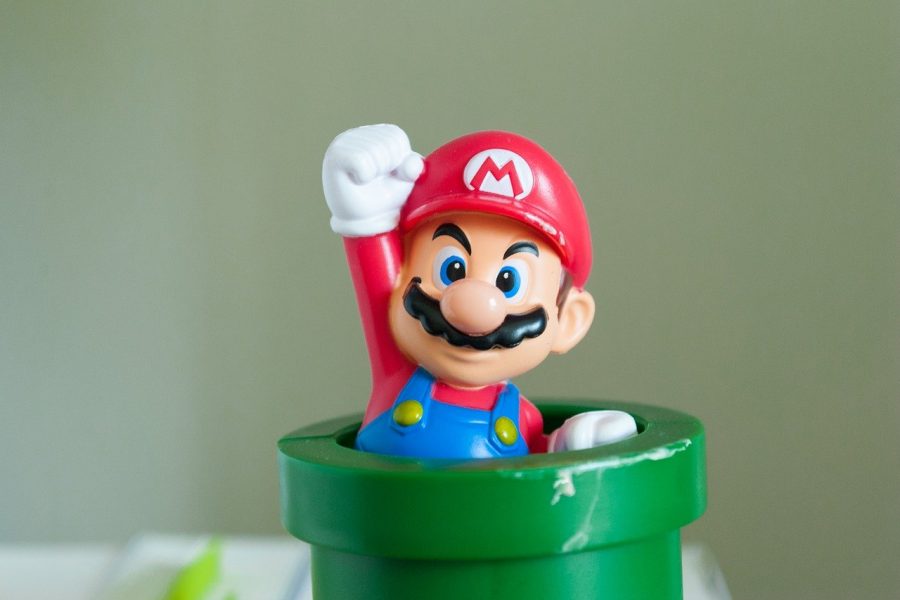From prison gangs to extortionists to neo-Nazis, the United States is home to a plethora of criminal groups and organizations. Although we don’t hear about them as often as we should, they remain an active threat to the country’s security apparatus, with membership comparable to that of some major multinational corporations.
10. Jewish Defense League
The Jewish Defense League is designated by the FBI as a far-right terrorist organization. Founded in 1968 by Rabbi Meir Kahane, one of the organization's stated goals was to defend against anti-Semitism worldwide. It was primarily founded on the principles of Jewish nationalism, territoriality, and the use of force to protect Jews from their enemies. Since then, the JDL has been accused of numerous terrorist attacks, including bombings, murders, and extortion.
The group is primarily active in the United States and Israel, where it has been responsible for a number of violent incidents over the years. It first gained notoriety in the 1970s, when JDL members carried out a number of high-profile attacks against Arab targets in the United States and Europe. They were also known for their staunch opposition to the USSR, as Jews throughout the Soviet Union were barred from emigrating to Israel. Despite its small size, the JDL was able to gain a large following in the Israeli-American Jewish community through its aggressive tactics.
9. MS-13
MS-13, or Mara Salvatrucha, is an international criminal organization that originated in Los Angeles, California, in the 1980s. Initially created as a protection racket for Salvadoran refugees in the city, the group gradually evolved into a violent criminal organization involved in activities such as drug trafficking and human trafficking. Today, the group operates in several countries, including the United States, El Salvador, Mexico, Honduras, and Guatemala.
MS-13 came to public attention in the 1990s and early 2000s when it was responsible for a string of murders and attacks across the country. The gang is notorious for its brutal tactics, such as their preference for using machetes and other melee weapons to fight their rivals. Despite its notoriety, however, MS-13 remains a relatively small gang, with an estimated 6,000 to 10,000 members in the United States. However, in Central American countries, the gang's membership may be as high as 60,000.
8. Vice Lords
The Vice Lords Nation began in Chicago, Illinois in 1958 as a grassroots organization designed to help local African Americans overcome poverty and discrimination. However, over time, the group has grown into one of the largest criminal organizations in the United States, with chapters in nearly every city across the country. The group is known to engage in a variety of criminal activities, including drug trafficking, robbery, extortion, and murder.
The gang primarily operates in the Midwest and southern regions of the United States, with an estimated total membership of between 30,000 and 35,000 regular and associate members. The U.S. government has designated the group as a criminal organization, although despite several high-profile arrests over the years, it remains a large and influential gang, particularly in Chicago.
7. Barrio Azteca
Barrio Azteca, also known as Los Aztecas, which has about 3,000 members in the United States and about 5,000 in the Juarez region of Mexico, began as a prison gang in the El Paso prison system in Texas. It was founded in 1986 and has since expanded its presence to other states such as Massachusetts, Pennsylvania, and New Mexico. While not a particularly large gang, they stand out for the sheer intensity of their violence, which often extends to both sides of the border.
By the 2000s, Barrio Azteca had allied itself with Mexico’s Juarez Cartel in their brutal fight against the Sinaloa Cartel. Since then, many members of the gang have been killed or arrested, including its leader Eduardo Ravelo, which has severely weakened the group’s influence in the region. However, according to law enforcement reports, Barrio Azteca has regained its strength in recent years, particularly in the city of Juarez, where it remains active in a variety of criminal activities, such as drug smuggling, money laundering, and extortion.
6. Motorcycle club "Mongols"
The Mongols Motorcycle Club is a notorious outlaw motorcycle club founded in Montebello, California in the 1970s. They have a strong presence in the Pacific and Southwest regions of the United States, with chapters in California, Nevada, Arizona, and other states. The group is predominantly Hispanic, although it also includes members of other ethnic groups.
The Mongols rose to prominence in the 1980s and 1990s as a powerful and violent motorcycle club. They were involved in a variety of criminal activities, including assault, intimidation, and murder, including a high-profile shootout with members of the rival Hells Angels gang in Las Vegas in 2002.
Despite several attempts by law enforcement to stop them, the Mongols Motorcycle Club remains a powerful and influential gang, with many of its members maintaining strong ties to other Latino street gangs scattered throughout Los Angeles.
5. Creeps and Blood
The Crips and Bloods are two rival gangs based in Los Angeles, California. Their origins are disputed, but some contemporary reports suggest that the Crips began as a neighborhood protection gang in 1971, while the Bloods were formed in response to the growing power of the Crips. Both gangs eventually grew into powerful criminal organizations, engaging in drug trafficking and extortion, as well as violent crimes such as robbery and murder.
The Crips and Bloods have a long-standing rivalry that has led to numerous violent clashes over the years. It is fueled by a complex mix of factors including territory, reputation, and personality conflicts between various gang members. Both are known for their heavy use of graffiti, hand signals, and colors to identify themselves.
The gangs' criminal activities have resulted in much violence and destruction in the communities in which they operate, with innocent bystanders often caught in the crossfire. However, despite various law enforcement efforts, Crips and Bloods remain a serious problem in many Los Angeles neighborhoods.
4. Latin Kings
The Latin Kings were formed in Chicago in the 1960s as a street gang made up primarily of Mexicans and Puerto Ricans. They are known to be involved in a variety of criminal activities, including drug trafficking, burglary, murder, identity theft, and money laundering, as well as high-profile killings of law enforcement officers in cities across the United States. The Latin Kings currently operate under two umbrella factions, Motherland and Bloodline, for their Chicago and New York chapters, respectively.
The group first gained media attention in the 1980s and '90s when they were linked to several gang-related murders and other crimes in Chicago. With over 160 chapters and between 20,000 and 35,000 members nationwide, the Latin Kings are one of the largest gangs in the United States, with a strong presence in many cities such as New York, Los Angeles, and Miami.
3. Gangster Disciples

The Black Gangster Disciple Nation, later renamed the Gangster Disciples, is a prison and street gang that formed in Chicago in the 1960s. It was founded by the merger of two gangs led by Larry Hoover and David Barksdale, the Black Disciples and the Supreme Gangsters. It is a predominantly African-American gang involved in drug trafficking, extortion, and murder.
While the Gangster Disciples have a significant presence in the Midwest, particularly Chicago and Detroit, the gang is also known to be active in other parts of the country, such as the East Coast and the South. In recent years, it has grown into a large and influential group, with between 25,000 and 50,000 members across the United States.
2. Aryan Brotherhood
The Aryan Brotherhood began as a white supremacist prison gang formed in response to race wars against rival black gangs. Over the years, it has grown into one of the most feared criminal organizations in the country, with many of its members openly sporting tattoos of Nazi insignia and other fascist symbols.
Members of the Aryan Brotherhood operate primarily in prisons, although they are also quite active on the streets. The group is involved in a wide range of criminal activities, such as drug trafficking and extortion, and although it is not as large as other gangs such as the Mexican Mafia, the Aryan Brotherhood remains a powerful force in the criminal underworld.
While law enforcement has worked for decades to dismantle the Aryan Brotherhood, the group’s highly structured hierarchy and its members’ fierce loyalty to the organization make it difficult to penetrate. However, there have been numerous high-profile arrests of Aryan Brotherhood members in recent years, and many of its leaders have been sentenced to lengthy prison terms. Despite these efforts, however, the Aryan Brotherhood continues to operate as a powerful and significant gang in many parts of the country.
1. Mexican Mafia

The Mexican Mafia, also known as La Eme and Los Carnales, is one of the largest prison gangs in the United States, with members operating in more than 13 states. It was founded in 1957 in Southern California by former street gang member Luis Flores, and many of its early members were leaders of Latino gangs operating in and around Los Angeles. It has since grown into one of the deadliest and most powerful gangs in the country.
The Mexican Mafia currently operates both inside and outside the U.S. prison system, and its criminal portfolio includes robberies, extortion, assault, murder, and drug trafficking. The gang is estimated to have between 350 and 400 members in U.S. prisons, with tens of thousands more foot soldiers on the streets of California and beyond.













Оставить Комментарий